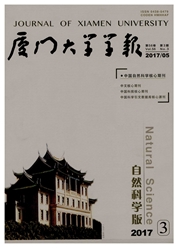

 中文摘要:
中文摘要:
近岸、河口区的缺氧问题正逐步发展为全球性的重大生态环境问题,探究缺氧的形成、变化趋势及其控制机理科学意义显著,也是区域环境保护与治理决策的科学基础.珠江是中国第二大河,其主要入海口之一的虎门及其上游水域的表层溶解氧浓度经常小于3 mg/L,甚至低达0.5~1 mg/L,该低氧水域面积超过70 km^2.本文以珠江口缺氧区域为主,综述了近岸、河口区的主要生物地球化学耗氧过程,提出在分析近岸、河口区的缺氧问题时必须综合考虑有机物耗氧分解与硝化作用,缺氧水域同时也是CO2、N2O、CH4等生源温室气体的重要源地.
 英文摘要:
英文摘要:
Hypoxia has been becoming a serious environmental and ecological problem in world coastal regions. The Pearl River estuary is the largest river/estuarine system in southern China. We have observed persistently low oxygen region(〈3 mg/L in surface water,covering a surface area of more than 70 km^2) in the vicinity and upstream of the Humen Outlet-one of major outlets of the Pearl River estuary. In this paper, we take the Pearl River estuary as an example and attempt to provide an overview of the major biogeochemical processes of oxygen consumption in estuaries and coastal regions including both nitrification and aerobic respiration of organic matter. Also discussed is the emission of greenhouse gases,such as CO2, N2 O, and CH4 in hypoxic areas.
 同期刊论文项目
同期刊论文项目
 同项目期刊论文
同项目期刊论文
 期刊信息
期刊信息
